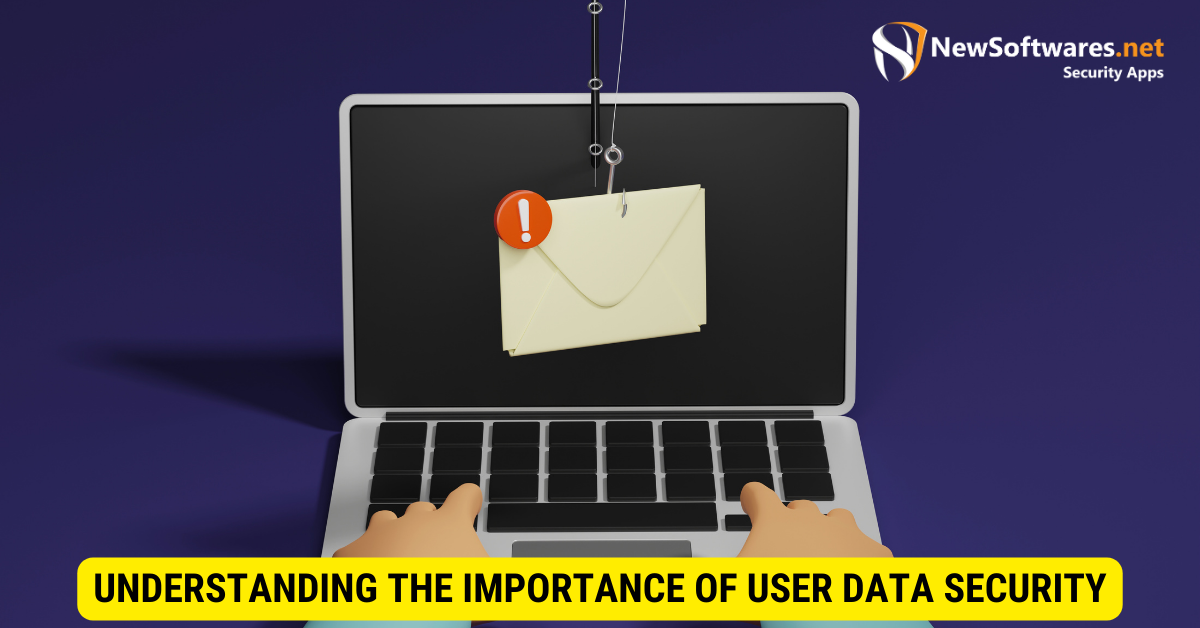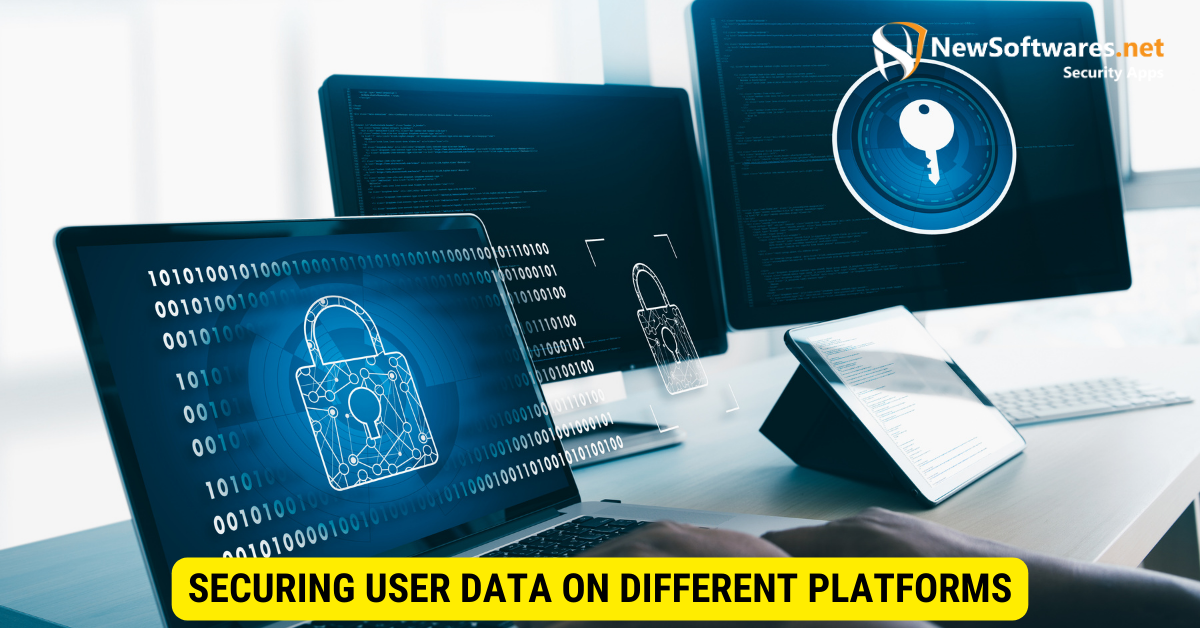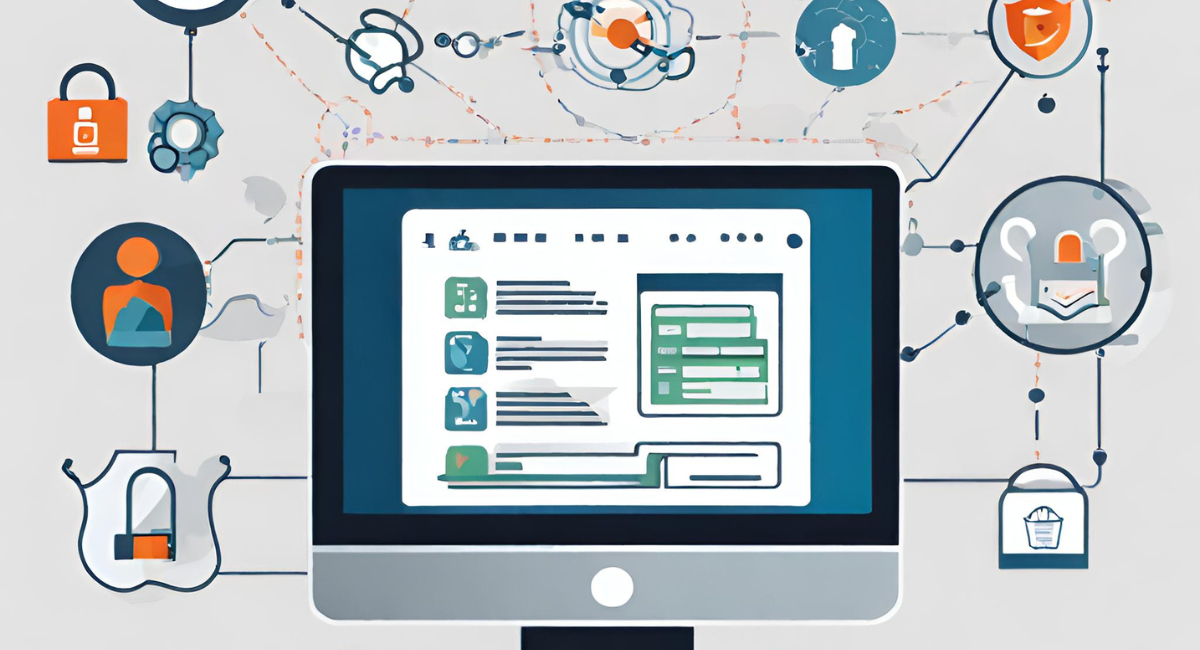To secure user data across all platforms, it’s vital to:
-
Understand the role and importance of user data in today’s digital age.
-
Recognize potential risks and threats to user data.
-
Apply fundamental data security principles such as confidentiality, integrity, and availability.
-
Implement the principle of least privilege to restrict user access.
-
Adopt strong authentication and authorization processes, encryption, and secure data storage practices tailored to each platform.
Understanding the Importance of User Data Security

In today’s digital age, user data plays a crucial role in numerous aspects of our lives. From personal information to financial details, user data has turn out to be a valuable asset for both individuals and businesses. As the volume and significance of user data continue to grow, it becomes imperative to prioritize its security across all platforms.
Without adequate security measures in place, user data becomes vulnerable to a wide range of risks and threats. Unauthorized access, data breaches, and identity theft are just a few examples of the potential risks that users face. To safeguard the privacy and protection of user data, it is crucial to establish fundamental principles of data security.
The Role of User Data in Today’s Digital Age
User data has become the cornerstone of numerous industries, such as e-commerce, social media, and banking. By analyzing user data, businesses can gain valuable insights into consumer behaviors, preferences, and purchasing patterns. This information, when used ethically and responsibly, allows companies to improve their products and services, creating personalized experiences for their users.
At the same time, user data is also valuable to malicious individuals or groups seeking to exploit it for personal gain. It is a common misconception that only large organizations or high-profile individuals are at risk. In reality, anyone who uses digital platforms is a potential target for data breaches and cyber-attacks. Therefore, it is essential to understand and address the potential risks and threats to user data.
Potential Risks and Threats to User Data
Protecting user data is an ongoing challenge due to the ever-evolving nature of cyber threats. From sophisticated hacking techniques to social engineering scams, cybercriminals are constantly finding new ways to exploit vulnerabilities in software and systems.
One of the primary risks to user data is unauthorized access. Whether through weak passwords, phishing attempts, or exploiting software vulnerabilities, unauthorized individuals may gain access to sensitive user data. This can lead to significant consequences, including financial losses, identity theft, and reputational damage.
Data breaches have also become increasingly prevalent in recent years. The unauthorized access and disclosure of user data can have severe implications, both for individuals and organizations. As data breaches often involve large volumes of personal and financial information, the potential impact on individuals’ lives can be profound.
Furthermore, the rise of mobile devices, web platforms, and desktop applications has expanded the attack surface for cybercriminals. Each platform presents its unique vulnerabilities and requires specific data security measures to mitigate risks effectively.
When it comes to mobile devices, for example, users often store a vast amount of personal information on their smartphones, including contact details, photos, and even financial data. This makes mobile devices an attractive target for cybercriminals. Therefore, implementing strong authentication methods, such as biometric recognition or two-factor authentication, is crucial to protect user data on mobile platforms.
Web platforms, on the other hand, face different security challenges. With the increasing popularity of online shop and social networking, users often provide sensitive information, such as credit card details or personal preferences, on various websites. To ensure the security of user data, website owners must implement secure communication protocols (such as HTTPS) and regularly update their software to patch any vulnerabilities that hackers could exploit.
Similarly, desktop applications used by individuals and businesses must also prioritize data security. These applications often store sensitive information locally on users’ computers, making them susceptible to attacks such as malware or ransomware. Implementing robust security measures, such as encoding and regular software updates, is essential to protect user data on desktop platforms.
In conclusion, user data security is of paramount importance in today’s digital age. With the increasing value and vulnerability of user data, individuals, businesses, and organizations must prioritize its protection. By understanding the role of user data, potential risks, threats and implementing appropriate security measures across different platforms, we can ensure the privacy and security of user data in the digital landscape.
Fundamental Principles of Data Security
When it comes to securing user data, three fundamental principles should guide all efforts: confidentiality, integrity, and availability.
Confidentiality ensures that user data is accessible only to authorized individuals or systems. It involves adopting encryption technologies, access controls, and secure communication protocols to protect data from unauthorized disclosure.
One example of a widely used encryption technology is the Advanced Encryption Standard (AES). AES is a symmetric encryption algorithm that practices a secret key to encode and decrypt data. It provides a high level of confidentiality by making it extremely difficult for attackers to decipher the encrypted data without the key.
Access controls play a crucial role in maintaining confidentiality. These controls determine who can access certain data and what actions they can perform on it. Access control mechanisms can include user authentication, such as passwords or biometric authentication, and authorization rules that define the level of access granted to different users or user groups.
Secure communication protocols such as (TLS) Transport Layer Security or Secure Socket Layer (SSL), are essential for protecting data during transmission. These protocols encrypt data as it travels over networks, ensuring that it cannot be intercepted or tampered with by unauthorized parties.
Integrity refers to maintaining the precision, consistency, and trustworthiness of user data. This principle focuses on preventing unauthorized modifications, tampering, or corruption of data during storage, processing, or transmission.
Data integrity can be ensured through various techniques, such as checksums or cryptographic hash functions. Checksums are mathematical values calculated from data to verify its integrity. If the calculated checksum does not match the expected value, it indicates that the data has been altered. Cryptographic hash functions, such as SHA-256, generate unique hash values for data. Even a small change in the data will result in a completely different hash value, making it easy to notice any tampering.
Another important aspect of maintaining data integrity is the use of error detection and rectification mechanisms. These mechanisms, such as parity checks or error-correcting codes, can identify and correct errors that may occur during data storage or transmission.
Availability ensures that user data is accessible whenever it is needed. Robust backup systems, redundancy measures, and disaster recovery plans are essential to avoid service disruptions and ensure continuous access to data.
Organizations can implement backup systems to create copies of data that can be restored in case of data loss or system failures. These backups can be stored on separate storage devices or in remote locations to protect against physical damage or disasters.
Redundancy measures, such as using multiple servers or network connections, can help ensure high availability. If one server or connection fails, redundant systems can take over the workload, minimizing downtime and maintaining access to data.
Disaster recovery plans outline the steps to be taken in the event of a most important disruption, such as a natural disaster or a cyber attack. These plans include procedures for data restoration, system recovery, and communication with stakeholders to minimize the impact on data availability.
Applying the Principle of Least Privilege
In addition to the fundamental principles of data security, organizations must also implement the principle of least privilege. This principle restricts user access rights to only what is necessary for their specific roles or responsibilities. By limiting access privileges, organizations can minimize the potential damage caused by compromised accounts or insider threats.
The principle of least privilege can be imposed by implementing robust authentication and authorization processes, such as multi-factor authentication and role-based access control.
Multi-factor verification requires users to provide multiple forms of identification, such as a key and a exclusive code sent to their mobile device, before gaining access to sensitive data or systems. This adds an added layer of security as even if one factor is compromised, the attacker would still need the other factor to gain access.
Role-based access control (RBAC) is a method of managing user access based on their roles or responsibilities within an organization. Each role is assigned a set of authorizations that determine what activities the user can perform and what data they can access. RBAC simplifies access management by allowing administrators to assign and revoke permissions at the role level rather than individually for each user.
By implementing the principle of least privilege and combining it with strong authentication and authorization mechanisms, organizations can knowingly reduce the risk of unauthorized access and protect user data from potential threats.
Securing User Data on Different Platforms

Data Security Measures for Mobile Devices
Mobile devices have become an vital part of our everyday lives, storing vast amounts of sensitive user data. To ensure data security on mobile platforms, several measures must be taken.
- Enabling device encryption to protect data stored on the device itself
- Implementing secure coding practices when developing mobile applications
- Requiring strong authentication methods, such as biometrics, for accessing sensitive data
- Regularly updating mobile operating systems and applications to patch security vulnerabilities
Protecting User Data on Web Platforms

Web platforms, including websites and web applications, are prevalent targets for cyber-attacks. To safeguard user data on these platforms, organizations must implement various security measures.
- Securing web servers with firewalls, intrusion detection systems, and web application firewalls
- Using safe communication protocols such as HTTPS to encode data in transit
- Regularly testing web applications for vulnerabilities and addressing them promptly.
- Implementing strict access controls and user authentication mechanisms
Ensuring Data Security on Desktop Platforms
Desktop platforms, including personal computers and laptops, remain popular targets for cyber-attacks. To protect user data on desktop platforms, organizations, and individuals should follow specific practices:
- Installing reputable antivirus and antimalware software to detect and remove malicious threats
- Regularly updating operating systems and software with the latest security patches
- Using strong keys and enabling two-factor authentication for user accounts
- Encrypting sensitive data stored on local hard drives or removable media
Implementing Strong Authentication and Authorization Processes
The Importance of Multi-Factor Authentication
Authentication is a serious component of data security. Multi-factor authentication (MFA) provides an extra layer of security by requiring users to provide multiple forms of identification to access their accounts.
Common methods of MFA include using a combination of passwords, security tokens, fingerprint recognition, or one-time codes. By implementing MFA, organizations can knowingly reduce the risk of unauthorized access and protect user data.
Role-Based Access Control for User Data
Role-based access control (RBAC) is an essential mechanism for ensuring access control and data security. RBAC assigns user access privileges based on their roles and responsibilities within an organization.
By implementing RBAC, organizations can enforce fine-grained access controls, ensuring that users can only access the data necessary for their job function. This significantly reduces the risk of unauthorized data access or data leakage due to excessive privileges.
Encryption and Secure Data Storage
The Role of Encryption in Data Security
Encryption is a vital tool in protecting user data, both at rest and in transit. By encrypting data, organizations can render it unreadable and unusable to unauthorized individuals.
End-to-end encryption is particularly crucial when transmitting sensitive user data over networks. This ensures that even if intercepted, the data remains inaccessible to unauthorized parties.
Best Practices for Secure Data Storage
Secure data storage is essential to prevent unauthorized access or data breaches. Organizations should adopt best practices to ensure the security of user data:
- Implementing secure data backup and recovery processes
- Encrypting sensitive data before storing it in databases or cloud storage
- Regularly monitoring and auditing data access to detect suspicious activities
- Implementing data retention policies to dispose of data that is no longer needed securely.
By following these best practices, organizations can significantly enhance the security and privacy of user data across all platforms.
Key Takeaways
- User Data’s Value: User data is a cornerstone in industries like e-commerce, social media, and banking, making its security paramount.
- Ever-evolving Threat Landscape: Cyber threats continuously evolve, with risks like unauthorized access, data breaches, and cyber-attacks posing significant dangers.
- Data Security Principles: Confidentiality, integrity, and availability are fundamental data security pillars that ensure data protection and accessibility.
- Principle of Least Privilege: Limiting user access to minimal essential rights can significantly decrease potential security breaches or insider threats.
- Platform-Specific Measures: Each platform (mobile, web, desktop) has unique vulnerabilities requiring tailored security measures such as encryption, secure communication protocols, and regular software updates.
FAQs
Why is user data security so important in today’s digital age?
User data security is paramount due to the increasing value and vulnerability of user data in industries like e-commerce, social media, and banking, making it crucial for all entities to prioritize protection.
What are some potential threats to user data?
Threats include unauthorized access, data breaches, identity theft, cyber-attacks, and exploitation of software vulnerabilities.
What are the core principles of data security?
The fundamental principles are confidentiality (data is accessible only to authorized entities), integrity (data remains accurate and trustworthy), and availability (data is accessible when needed).
How does the principle of least privilege enhance data security?
This principle restricts user access rights to only what’s necessary for their specific roles, minimizing potential damage from compromised accounts or insider threats.
Why is multi-factor authentication critical for data security?
MFA adds an extra layer of security by requiring users to provide multiple forms of identification, substantially reducing the risk of unauthorized access.
Conclusion
In conclusion, securing user data is not just beneficial but essential. As cyber threats grow and diversify, a multi-faceted, principle-driven approach—tailored to individual platforms and encompassing confidentiality, integrity, and availability—is crucial. This includes implementing least privilege principles, strong authentication measures, encryption, and continually updating security protocols to protect data across all platforms effectively.
